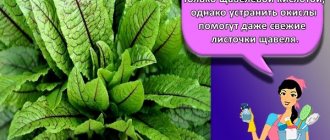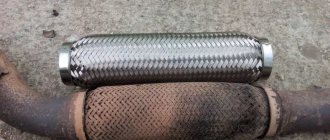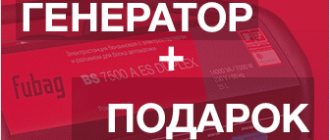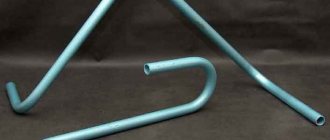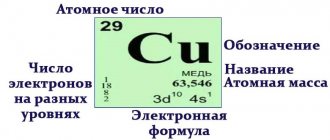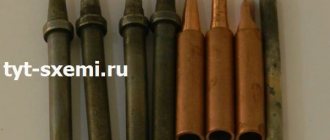Aluminum is a lightweight, durable metal that heats up quickly and evenly. These qualities make it suitable for the manufacture of kitchen utensils, primarily pots and pans, and colanders.
However, initially shiny or evenly matte aluminum household items lose their attractive appearance, becoming covered with oxide, stains, a hard-to-remove coating, or burning to blackness.
It is unpleasant and even dangerous to use such utensils for cooking. Therefore, it is recommended to figure out how to clean aluminum utensils and rid them of carbon deposits and oxides.
Features of cleaning aluminum
If preventative care is carried out periodically, “difficult” plaque is unlikely to form. However, it is a tedious task and people prefer to do the work at the last minute. There is a lot of information on how to effectively clean aluminum, and here are two of the simplest:
- Mechanical type. Suitable for smooth surfaces, without a relief pattern.
- Chemical type. Approved for products with complex surface roughness.
At home, you will need fruit acid, sodium bicarbonate, and detergent. You will also have to prepare a cotton towel, a soft sponge and a suitable container. As an alternative, you can buy a specialized paste, however, it has many harmful elements, and cleaning aluminum items is not always recommended.
There is no need to use metal brushes during the work. The iron bristles will scratch the fittings, erasing the first protective enamel. This will affect both the appearance and properties of the utensils. And the aluminum products themselves will suffer irreversible damage.
Light weight, uniform heating, shiny appearance – these are the parameters for which aluminum utensils are valued by many professional chefs and housewives. It is important to note that things from this component appeared a long time ago, and even then people understood the rules of care. For this they used sorrel and apple juice, onions and kefir. Yes, there was no chemical way to clean aluminum from dirt then, and the whole procedure was very long, but the homemade version is always safer and more environmentally friendly.
Household chemicals for cleaning aluminum
Universal oxide cleaners are something else that can be used to clean aluminum. But such a choice will lead to a loss of brightness, because the composition contains many chemicals. For best results, it is recommended to do the following:
- Do not rinse hot dishes. High temperature changes have a detrimental effect on the characteristics of almost any cookware;
- Do not scrape burnt food with a knife. Doing this will leave streaks and make it more difficult to clean the aluminum in the future. It will also be impossible to restore scratches;
- wash by hand only. The use of a dishwasher (due to high temperatures) is not permissible;
- During maintenance, do not apply strong or alkaline preparations, since it will not be possible to clean aluminum from oxidation without harm. Concentrated mixtures will cause the metal to darken.
Knowing and applying these features will extend the life of your kitchen utensils.
Garage Recipes
There are several garage recipes that will help you make anti-oxidation products.
Boiling soda
Ordinary boiled water will help remove new traces of oxide. The liquid must be boiled in a small saucepan in advance. Then the boiling water is poured into a basin in which all parts that need cleaning will be soaked. The soaking time lasts about 3-4 hours. Then all products are washed and wiped from any remaining water. If the oxides have not disappeared, you will have to use other, more effective means.
See also
How and with what to clean a leather bag at home
Borax
A dense oxidized film can be removed using a special pharmaceutical borax. To restore an aluminum product, perform the following steps:
- add 10-15 grams of borax to a glass of water;
- stir 3-4 drops of ammonia into the mixture;
- treat the metal coating with the prepared liquid;
- after forty minutes, the remaining composition is washed off from the surface.
Sodium hydroxide
You can remove a layer of stubborn dirt with caustic soda. The advantages of this procedure include the fact that it is easy to carry out at home. The product in an amount of 150-200 grams is added to 7-8 liters of water and mixed thoroughly. It is necessary to use heated water, the temperature of which is 60-80 degrees. The part should be washed with the prepared sodium solution.
Coca Cola
This carbonated drink has excellent cleaning properties that help restore contaminated aluminum coatings. Several liters of Cola are poured into a saucepan. Then the product is placed in it and soaked for about an hour. During this time, the darkening should completely disappear.
If Cola did not help cope with the oxide, then you will have to use a more effective remedy.
Methods for removing contaminants
There are several good methods for washing off various cooking marks and burnt layers, which are used depending on their complexity:
- Blackening. To get rid of it, an sour mixture is prepared, consisting of kefir or sour milk, cola, and cucumber pickle. The object is immersed in the consistency and remains for 12 hours.
- Another effective way is sour apples. They are cut into slices, and the required area is wiped with the inner zone. If necessary, repeat the steps. At the end, everything is washed and wiped with a (not hard) rag.
- Contaminants in the form of soot can be wiped off with alkali. It is poured into a burnt container and placed on a gas stove that is turned on. It is better to choose the maximum flame so that the reaction occurs faster. After boiling, remove the container from the heat and allow it to cool completely. It should be noted that this technology is perfect for eliminating other contaminants of any complexity.
Nagar
Darkening of aluminum products
In such moments, there is no need to be afraid of experiments, since none of the varieties will cause damage. There are also a number of advantages: the availability of components, their low cost and safety.
Video
To figure out how to restore aluminum products to their original shine, radiance and cleanliness, we recommend watching informative videos:
Young mother, wife and part-time freelancer. Being a lawyer by training, I am accustomed to collecting and providing the most complete and reliable information. Constantly improves in the professional field and strives for personal growth and development.
The easiest way to remove scale and carbon deposits from the soleplate of the iron is with table salt. Pour a thick layer of salt onto the paper, heat the iron to maximum and run the iron over the salt bed several times, applying light pressure.
The dishwasher cleans more than just plates and cups. You can load it with plastic toys, glass lamp shades and even dirty vegetables, such as potatoes, but only without using detergents.
Before removing various stains from clothing, you need to find out how safe the selected solvent is for the fabric itself. It is applied in a small amount to an inconspicuous area of the item from the inside out for 5-10 minutes. If the material retains its structure and color, you can move on to stains.
If your favorite things show the first signs of gestation in the form of untidy pellets, you can get rid of them using a special machine - a shaver. It quickly and effectively shaves off clumps of fabric fibers and returns things to their proper appearance.
There are special traps to combat moths. The sticky layer with which they are covered contains female pheromones that attract males. By sticking to the trap, they are eliminated from the reproduction process, which leads to a decrease in the moth population.
Fresh lemon is not only suitable for tea: clean dirt from the surface of an acrylic bath by rubbing with half a cut citrus, or quickly wash the microwave by placing a container of water and lemon slices in it for 8-10 minutes at maximum power. The softened dirt can simply be wiped off with a sponge.
Stretch ceilings made of PVC film can withstand from 70 to 120 liters of water per 1 m2 of their area (depending on the size of the ceiling, the degree of its tension and the quality of the film). So you don’t have to worry about leaks from neighbors above.
Threads made of gold and silver, which were used to embroider clothes in the old days, are called gimp. To obtain them, the metal wire was pulled for a long time with pliers to the required fineness. This is where the expression “to drag out the rigmarole” came from - “to do long, monotonous work” or “to delay the completion of a task.”
An aluminum pan is lighter than pans made from other materials and heats up faster. But when it is used for a long time, it darkens, carbon deposits form on it, which “eats” into the metal. To ensure that your dishes last as long as possible in your household and maintain their original appearance, it is useful to learn a few simple tips on how to clean aluminum.
Aluminum products have certain properties
, which limit the use of these items in everyday life. Therefore, you should take into account certain nuances of cooking in aluminum cookware:
It will not be possible to scrape off carbon deposits from aluminum cookware. There are special ways to remove it.
Aluminum is a soft metal that is prone to oxidation
. Cleaning powders, steel wool and sponges leave scratches on its surface. However, even long-term use of aluminum products allows you to maintain their original condition, subject to certain recommendations:
Since dirt, dark spots, and whitish stains from food, water, and chemical detergents can easily form on aluminum products, you need to know how to clean aluminum cookware at home, choose the right cleaning products and not use harmful substances. How and how to clean an aluminum pan will depend on how dirty it is.
Choice of product
If the task is not just to get rid of blackening, but also to maintain the shine of the surface, then you will have to carefully select the substance. An alloy of this kind is soft and can be damaged with a simple hard rag. Small scratches will ruin the entire image and make the surface matte. However, you can correct the situation if you purchase a regular polishing agent. For example, GOI paste can perfectly cope with this problem. As for the safe elimination of flaws, give preference to more gentle methods:
- soap solution;
- food acids;
- salt;
- office glue.
Soap solution for removing carbon deposits
Cleaning preparations for cleaning aluminum can also be found in the store, but before purchasing it would be wise to familiarize yourself with the composition . Of course, industrial chemistry is quicker than others to cope with the task, but continued use of the frying pan for cooking will be dangerous.
How to clean aluminum cookware: products and equipment
- Laundry soap and various recipes using it,
- Even office glue is often used,
- You can take products used to clean glass and porcelain,
- Soft cloth, rag and cotton products,
- When choosing what to clean aluminum with, popular products are: table vinegar, cream of tartar, baking soda, alcohol, vinegar, lemon and others,
- Popular among the people are: oxalic acid, kefir, onions, apples and Coca-Cola.
Aluminum is a fairly soft metal and can be easily scratched with a hard wire brush. Therefore, it is better to refrain from using wire brushes or sandpaper.
Of course, this is not all; many more methods are used for cleaning, but these are the most popular and effective. Some people prefer to buy a special detergent for aluminum, but most save money on this. At home, you can polish aluminum just as well.
Methods for removing carbon deposits
Burnt food remains on kitchen utensils are a real headache for every housewife. And it can take a whole day to wash a small saucepan. For better results, some resort to “barbaric” techniques: scraping the layer with an iron brush, knife, and even sandpaper. But these actions take away strength and cause more harm. To properly remove carbon deposits, it’s easier to do this: stir salt in warm water (proportions 50 to 50), wait for it to dissolve and pour it into the pan. Next, the workpiece should be soaked for an hour. During this period, the solution will penetrate deep and remove the fumes. At the end, everything is washed with cold water and wiped with a cloth.
Cleaning carbon deposits
Remove carbon deposits
Cleaning oxides and carbon deposits is also quite simple. This will require funds and products that many people have in their homes. Moreover, such cleaning does not take much time and does not require serious effort.
- Aluminum is clarified using brine from cucumbers, fermented milk products such as milk and kefir. It is necessary to pour the available product into the dishes that need to be cleaned for half a day. Most often they leave it overnight so that you can simply wash the dishes in the morning. If you need to clean some objects from carbon deposits, they can be placed at the bottom of the container that was filled. Cleansing occurs thanks to the acids found in these products.
- A sour apple will help clear carbon deposits and remove oxidation. The fruit needs to be cut in half and rubbed onto the desired surface until shiny. The acid will corrode all dirt, and therefore, after rinsing with water, the item will shine.
- Contaminants can be removed using a saline solution. You need to take salt and water in equal proportions, and the first ingredient should be completely dissolved. Using a sponge, you need to apply the solution to the item that requires cleaning, leave it in this state for a while, and then rinse thoroughly with water.
Cleaning aluminum from corrosion and oxide
This circumstance applies more to the restoration of objects that are not used in dining rooms and kitchens. For example, you can find a special paste to add shine to car parts. A small amount of it is applied to a rag (hardness does not matter), and the damaged part is thoroughly wiped. This way you can quickly clean aluminum from rust and oxides, and the part will acquire a new appearance. As for tools with metal bristles, their use is highly not recommended. Otherwise, the spare parts will show signs of mechanical impact, which will be clearly visible in the sun. During the period of cleaning aluminum from corrosion, it is necessary to use personal protection, especially if the work is carried out indoors. These special products can release harmful components that damage the skin and respiratory system.
Cleaning aluminum parts from oxide
Recommendations and care tips
Before using aluminum cookware for the first time, it is recommended to calcine it thoroughly. To do this, it is recommended to pour a small amount of sunflower oil and a tablespoon of salt into the bottom of the pan, and then keep it on the fire for a while, stirring the salt. After completing the procedure, it is recommended to wait for the dishes to cool, after which they should be washed thoroughly.
It is not recommended to use abrasive products when washing, as they can remove the protective layer, which will subsequently cause the dishes to darken. If the dishes previously contained dairy products, eggs or dough, then you must first wash the dishes with cold water, and only then use hot water.
If you boil clean water or potato broth in an aluminum container, it may darken. In order for the dishes to acquire shine, you need to add a small amount of ammonia to it each time you rinse. It is also not recommended to store such types of products as pickles and mushrooms in dishes made of this material. And you can’t ferment cabbage in it either.
It is necessary to protect dishes made from this material from mechanical damage, since aluminum bends and breaks easily. This point especially applies to lids. If you follow these few care rules, products made from this material will delight you with cleanliness and shine for a long time.
Aluminum is a lightweight, durable metal that heats up quickly and evenly. These qualities make it suitable for the manufacture of kitchen utensils, primarily pots and pans, and colanders.
However, initially shiny or evenly matte aluminum household items lose their attractive appearance, becoming covered with oxide, stains, a hard-to-remove coating, or burning to blackness.
It is unpleasant and even dangerous to use such utensils for cooking. Therefore, it is recommended to figure out how to clean aluminum utensils and rid them of carbon deposits and oxides.
Glue and soda
This unusual, but highly effective compound will help get rid of stubborn dirt. This substance has water-repellent characteristics, which greatly simplifies the process. Everything goes according to the following system:
- 10 liters of boiling water is poured into a special container;
- 100 grams of each element are added;
- the prepared item is immersed in a tub for 3 hours;
- After time, the residues are washed off with soap and wiped with a cloth.
Cleaning dishes with baking soda
Such a connection will not take much effort, and the office glue, when entering into a thermal reaction, does not emit harmful fumes. Therefore, it is well suited for processing industrial and other products.
Methods for removing carbon deposits from aluminum
Carbon deposits are a common phenomenon for aluminum cookware. Removing the remains of burnt food and returning the product to its natural shine and cleanliness is quite difficult, given the softness and capriciousness of the metal. However, it is possible to cope with the problem using available means and small tricks.
Dentifrice
To remove carbon deposits from the bottom of the pan, sprinkle it generously with tooth powder and sprinkle with a little water. Leave the container like this overnight, and in the morning remove dirt with a silicone spatula or soft sponge.
Table vinegar
This is an “old-fashioned” technology that has stood the test of time. All you need to prepare is a certain amount of wine vinegar or citric acid. In some cases, you can prepare a gentle preparation and dilute it in a ratio of 1 to 10. If the object is covered with burnt on the inside, then the mixture is poured inside and put on high heat and brought to a boil. Over the entire period of time, a reaction will occur and unnecessary traces will be eliminated. As an alternative, you can take 6% vinegar or lemon juice from natural fruit. If prints are formed on the outer part, the element is completely immersed in boiling water for a certain period. Immediately after boiling, you cannot cool a pot or pan in cold liquid, because any metal reacts poorly to sudden temperature changes. It is wiser to wait a while and wipe the surface with a sponge. You should also always remember the rules for using such utensils, and if the situation gets very bad, table vinegar is unlikely to help against stains. Here you will need more serious procedures, or the purchase of another copy.
Vinegar
General recommendations
Aluminum is a soft metal that requires careful handling during operation and cleaning. To clean products from various types of contaminants and not damage the material, follow simple recommendations:
- Do not use metal scrapers or brushes, hard scourers or sharp objects . These tools damage the surface, leaving scratches and other unsightly marks. After such treatment of the dishes, aluminum particles can get into the food, which will negatively affect the taste of the dish and its benefits.
- Do not clean aluminum alloy products with abrasive agents (sand, powder).
- Kitchen utensils should be washed only after they have cooled down . Hot metal deforms when interacting with water, and it is almost impossible to return its original appearance on your own.
- such as acids or alkalis for cleaning They spoil the aesthetic appearance, and the resulting chemical reaction can lead to the release of toxins or heavy metals that are hazardous to health.
- To achieve the desired effect, choose a cleaning method and cleaning product based on the type and degree of contamination .
- Do not wash aluminum cookware in the dishwasher . Temperature changes negatively affect the metal and increase the risk of deformation and corrosion.
- To make the product shiny, polish the surface with a sponge dipped in a solution made from borax and ammonia in a ratio of 3:1.
Do not wash aluminum cookware in the dishwasher.
Cream of tartar
It is considered the very first variation of plaque erasing. However, finding this on the modern market is problematic. To make such a stone yourself, you will need an ordinary bottle of fruit alcohol, which is stored in a cool place and in a horizontal position. Crystal accumulation is also common inside wine tanks. But there is one peculiarity: it may take 5-7 years for the stones to accumulate. Before processing, the crystals are diluted in a small amount of boiling water (to a pulp state), and after cooling, it is applied to a napkin, which is used to wipe the object. Such a stone is an effective remedy against stains, and is also gentle. Only a person will have to spend several hours to achieve the desired result. But the negative aspects make this version not popular among the people.
Cream of tartar
How are aluminum pans used?
Aluminum, by its nature, has some very unpleasant properties that significantly reduce the usefulness of cookware in everyday life.
- Firstly, this material strongly interacts with various organic acids, so under no circumstances cook soups and porridges in aluminum pans. They will turn sour in literally a few hours, presenting you with problems in the form of an unpleasant pungent odor and a damaged vessel.
- Secondly, aluminum cookware is good for cooking jam, compotes and other preparations that require rolling into jars and further long-term storage. But again, it is not recommended to leave it cooked in a pan: it will not turn sour as quickly as in the first case, but it can still spoil.
- Thirdly, before using an aluminum pan (to avoid unpleasant consequences), be sure to boil water in it with added salt. Proportions: 1 teaspoon of salt to 5 teaspoons of water.
- Fourthly, do not forget that dishes made of this material do not have a non-stick coating, so if you are distracted, the food will begin to burn and settle on the walls of the pan with black soot, which can be extremely difficult to clean. Also, the outer surface becomes black due to contact with a gas or electric burner.
- And fifthly, don’t try to just “scrape off” the carbon deposits. Read the tips below and you will keep your dishes safe and in pristine condition.
Baking soda
This is a similar care option. Everything is prepared in a similar way (mixed with water) and the desired area is wiped. Baking soda against scale is the latest, but very effective method of dealing with difficult stains. In addition, it is the cheapest and easiest to use.
If this technique does not help, you can use it in conjunction with others. It will also help polish your utensils without leaving scratches on them.
Using Baking Soda to Clean Aluminum Cookware
How to properly clean aluminum cookware?
As mentioned above, aluminum cookware stands out for its light weight. In addition, heating occurs evenly and does not require a large consumption of a heat source. New products sparkle, but over time, if not properly cared for, they become dull and oxidize. The vast majority of women use the same products to clean aluminum as they use for other cookware. This is a common misconception; detergents will not restore beauty and shine, but will only wash away grease and external dirt.
To clean aluminum, just follow these simple recommendations:
- You should start washing aluminum cookware only after it has completely cooled down. Don't rush, otherwise you may do harm. Dipping hot metal into water can cause it to deform and completely ruin the product.
- The real problem is the burnt food on the bottom. In the fight against this, even knives and iron brushes are used, which leave their marks forever. And everything can be done without sacrifice. To do this, just pour warm water and add detergent. Stir and leave for 30 minutes. Now, using a regular cloth, you can easily clean off the burnt residue.
- Despite all the advantages of aluminum, it also has a significant disadvantage. You need to wash it by hand, as the dishwasher uses hot water, which can cause deformation.
- It is better to wash without using strong acids, they will not return the former shine.
- When washing, do not use metal or hard brushes, which leave their mark on the surface.
How to wash a burnt kettle
Forgetting a kettle on the stove results in a damaged appliance. It turns dark brown on top. Here you will have to wash it with effort, using various means: both folk and chemical.
First you need to soak the item in warm water with vinegar and soda. It is necessary to boil. It is better to take laundry soap with PVA glue. If stains remain even after boiling for half an hour, you can go over it with a sponge and cleaning powder. But often they leave scratches on stainless steel or glass. We must proceed with caution here.
It is better to test how the product works on a small area of the kettle.
Exterior cleaning chemicals
Special substances will help in cases where the contamination is old and difficult to clean at home.
Important! Grease-removing drugs are toxic and must be handled with gloves and with open windows. Examples of trade names: Oven Cleaner, “Shumanit”, “Mr. Cleaner”.
Algorithm of actions:
- The utensils are treated with the preparation and wrapped in cling film for half an hour to reduce the spread of odor throughout the apartment.
- The dishes are washed and rinsed several times in warm and cold water.
- Remains of the product can be removed with table vinegar if there are children at home.
This cleaning option is the most effective.
How to remove grease from the glass surface of a teapot?
You need to wash the glass version very carefully. It is unacceptable to use abrasives as they will leave scratches on the surface of the product. It is best to use household chemicals: Frosch, Cillit, Shumanit in liquid or gel form. You need to apply the products with gloves and only to dirty areas so that the active substances act on the remaining oil and do not damage the surface. After application, you can leave them for 15-20 minutes and rinse thoroughly with warm and then cold water. If necessary, you can boil the kettle again if it has been treated not only from the outside, but also from the inside.
It is better to use gloves because household chemicals are toxic and cause skin irritation. It's also a good idea to keep glassware away from fatty foods in the future, as high temperatures can cause cracks from flying hot oil.
Why you need to get rid of scale in your kettle
The rate at which salt deposits form depends on the quality of the water. The higher the hardness index, the faster the scale settles on the electric heater and the walls of the device.
Content:
[show/hide]
Maintenance of such equipment must be timely, because:
- rust forms under a layer of limescale, which destroys the metal;
- scale has low thermal conductivity, while blocking the contact of water with the heating element. In order to heat the liquid to the required temperature, the device has to work hard, this reduces its service life;
- under the influence of high temperatures, lime deposits impair the taste of water;
- Over time, excess salts, which inevitably enter the body with water, can have a negative impact on the functioning of the excretory system, kidneys, bones and joints.
Scale can have a negative impact not only on kitchen appliances, but also on the human body
Special descaling products
The stores offer professional products for removing plaque – “Antinscale”, “Antinscale”. They contain citric, ascorbic, adipic, orthophosphoric or sulfamic acids, soda ash. They are poured into water, then boiled for half an hour and poured out. Floating deposits are softened and easily cleaned from the disc and disc surfaces. After using the products at home, it is correct to boil the water 2-3 more times.
Antiscale product for dummies (photo source: Yandex.Pictures)
